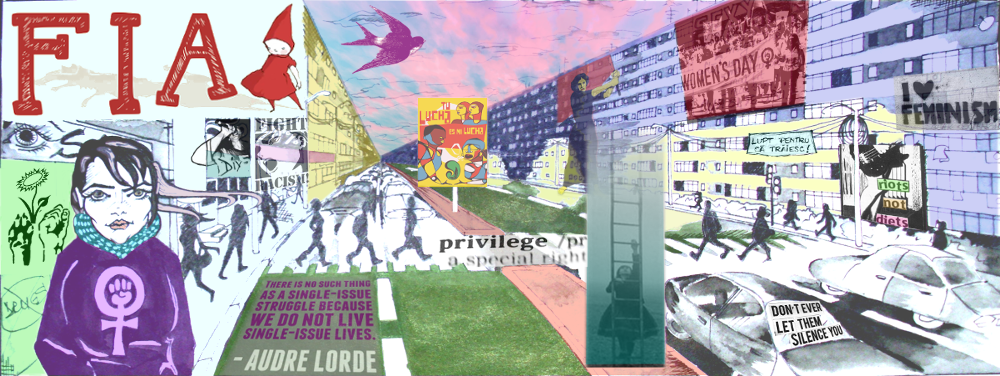two great posts over at feministe:
— this one, on roma issues, by someone from greece (go read her blog)
— and this slightly older one, on feminists and femininity
but the former has 4 comments so far, while the latter… 587!
why do we, as women (feminists, anti-feminists, and anyone in between), get more passionate about matters of body image than anything else? why does what we look like or what we DON’T look like where femininity is concerned seem to constitute such a huge chunk of who we are, and why does it depend so strongly on what others look like or don’t look like by comparison?
personally, as i suggested in a comment on another feministe thread a while ago, i think that it’s not even so much what we look like, really, or how much we cater to “femininity” or not, in the end… it’s the lesson that we should care about this issue above all else that we absorb so well and can’t seem to stop following, in all kinds of different contexts, and that‘s what puts us in a bind, drives us crazy, encourages us to sometimes be ok with what we know is misogyny, and perpetuates it all.
that second post is titled “Something I never understood…” – but even if we don’t articulate it in our minds, i think we know what’s going on. this stuff affects us, and it’s disfunctional! we know very well that as a woman you may choose to comply with femininity – in which case you have it hard because the whole performance is not an easy thing to put on and maintain, and though you’ve complied you also become an object of scorn (as besides being the socially acceptable choice for women femininity is deemed silly, frivolous etc. etc. in the grand scheme of things), OR you may choose to not comply – in which case you will have it hard because you’re going against the grain and thus become an object of scorn, too. you can’t really win. and oftentimes these “choices” aren’t entirely up to you. and then there’s the degrees. and then, the battle with choosing which parts of oneself to appreciate and which to scorn. and so on… given all that, of course we, as women, feel compelled to judge other women so that we can feel at least temporarily good about whatever our choice has been, while knowing it won’t bring us complete comfort or contentment – can’t stop us from being women living in a patriarchy – anyway.
the system works so well precisely because it’s set up so that femmes can ridicule those who aren’t “feminine” enough, while those who’ve escaped the trappings of femininity can ridicule femmes, each in their own special (pointless, damaging) way. (and “feminists,” like anyone else, do ridicule and attack women who are typical “tools of the patriarchy” – or “sluts” or “happy hookers” or what have you… – to say it doesn’t happen, to say that kind of language is not used or that stance taken, is a lie or at best a delusion.) of course, neither stance disrupts the social order at all; they’re misogyny, at their core, and of course men, who are not women, have access to – and oftentimes make use of – both. the basis is the patriarchal system, which relies on 1. the gender binary and 2. the patriarchal value scale; and so, by definition, a woman must be feminine — BUT femininity is inferior and mockable — but NON-femininity is mockable and not ok in women –> and the vicious cycle continues, reinforced by men and women.
my question is – why isn’t feminism helping us to break out of that cycle for ourselves? shouldn’t it, after all?! (and i think that’s essentially the same question as renegade evolution‘s in that much commented post.)
however, my other question is: why do we waste so much time and energy on stuff that’s ultimately not what we want to care about?





